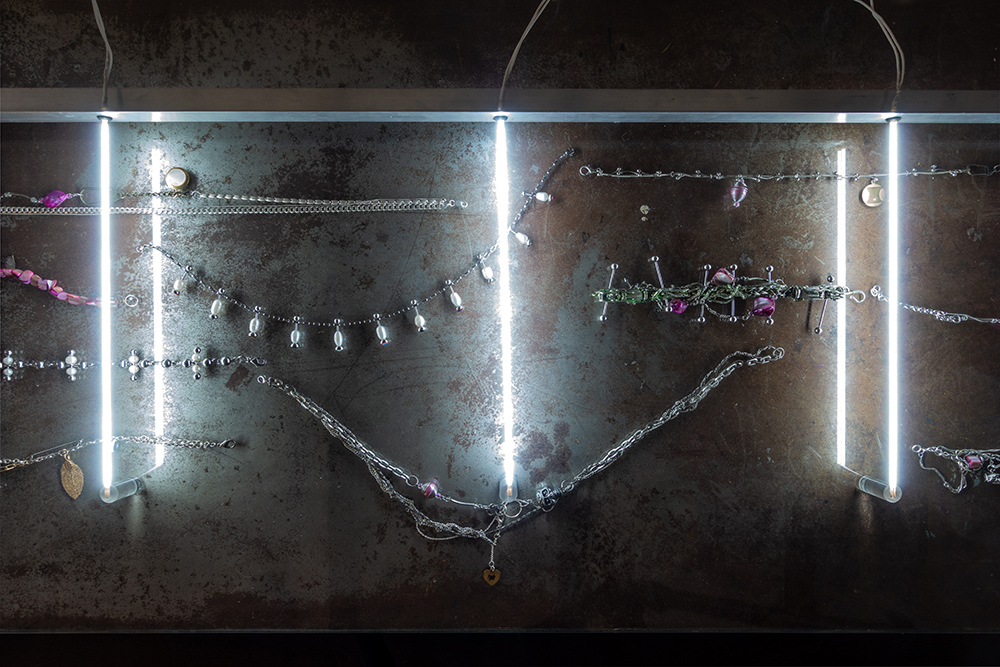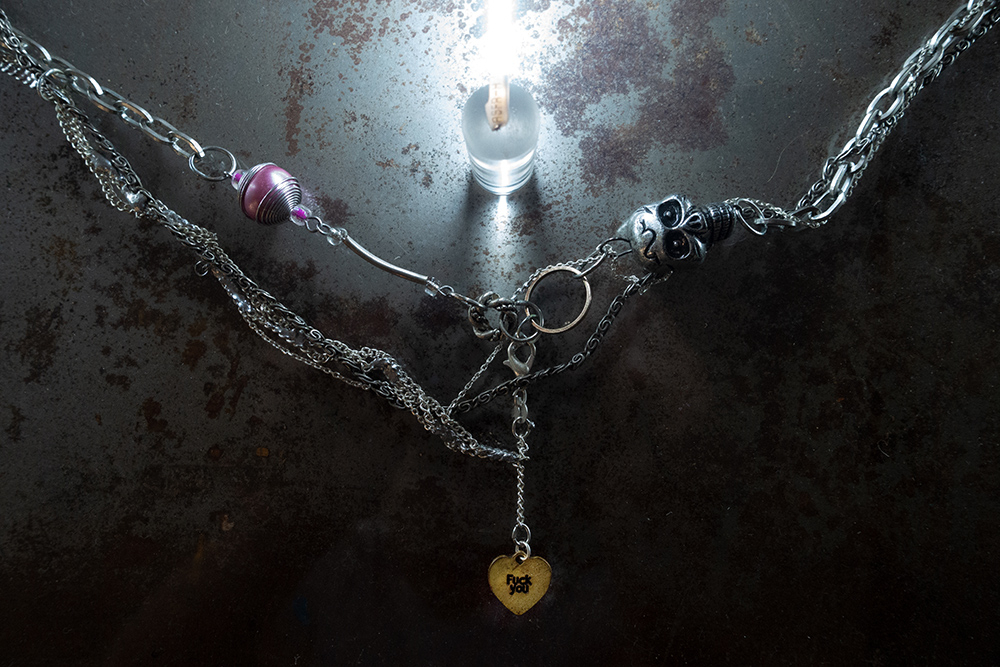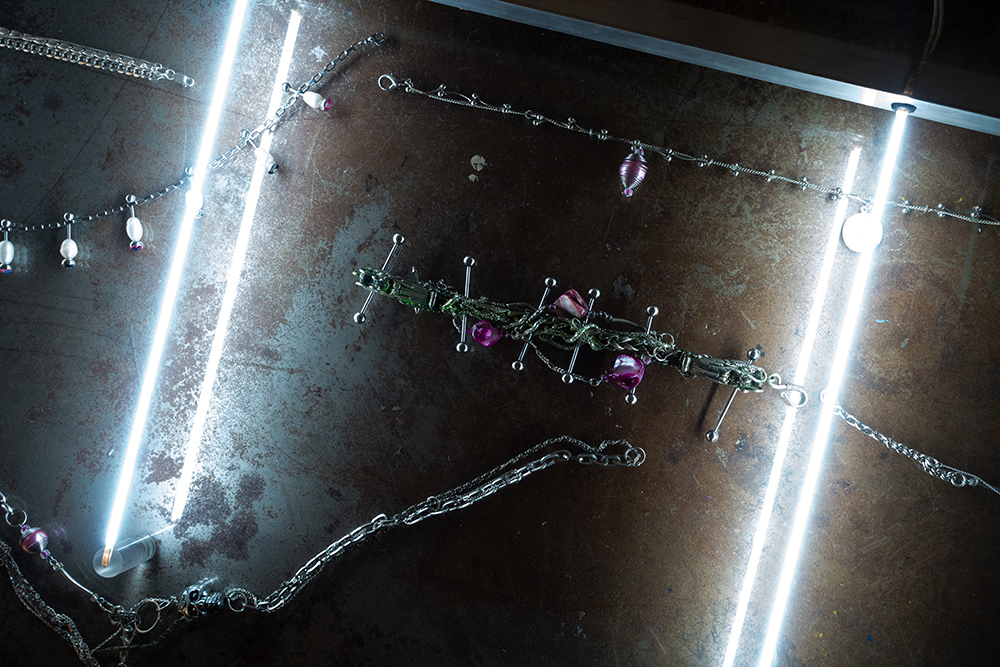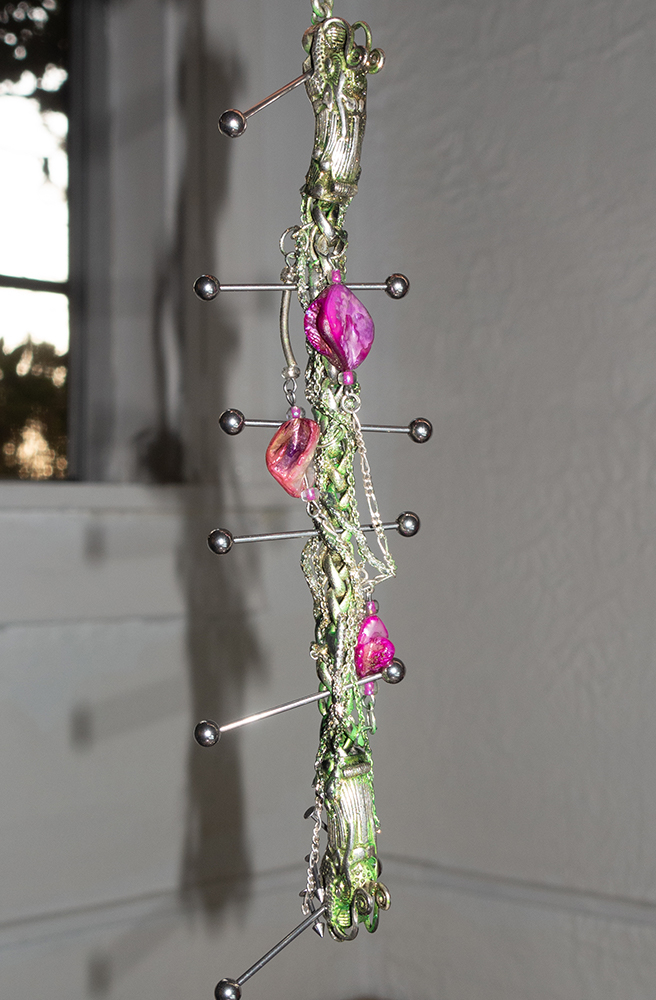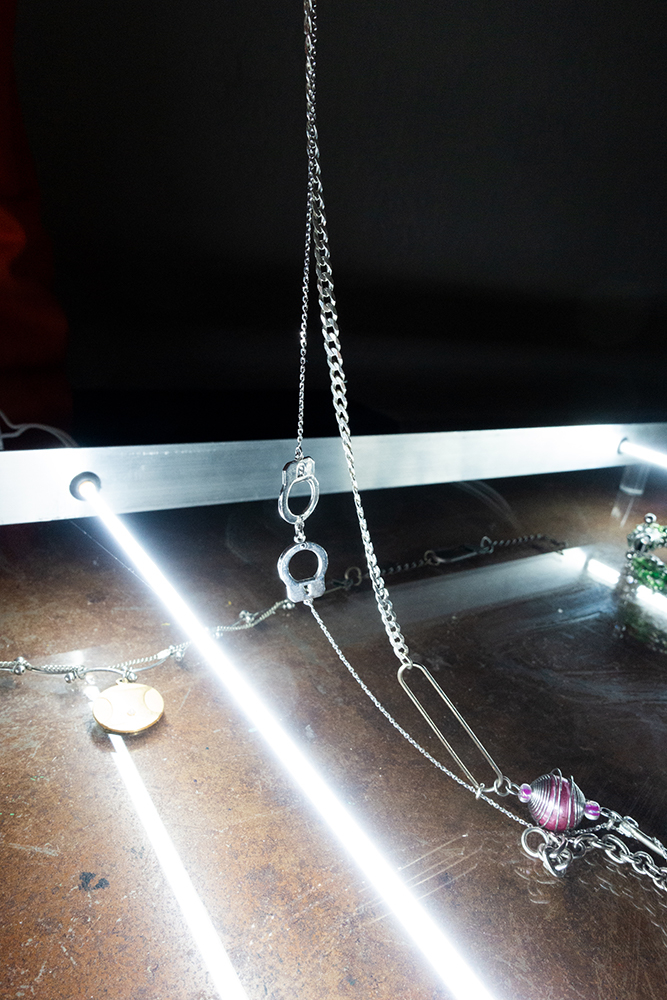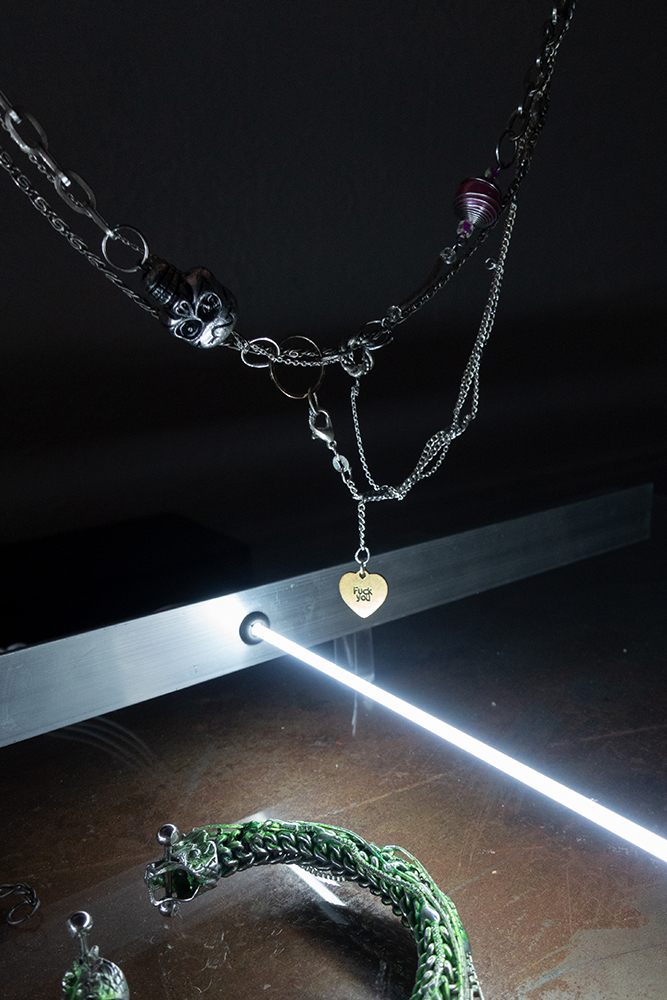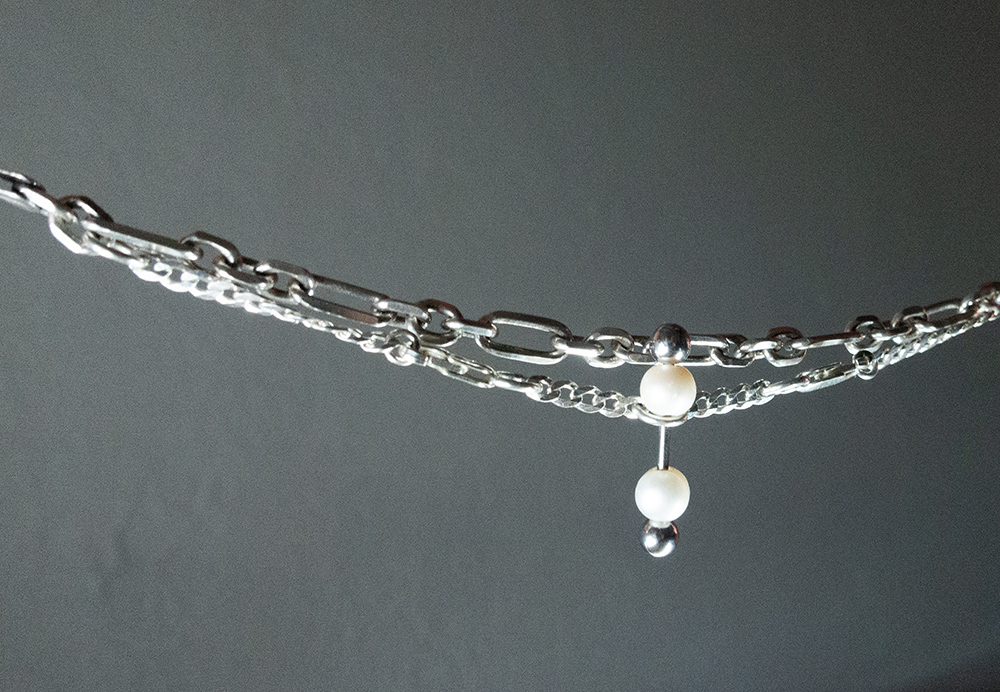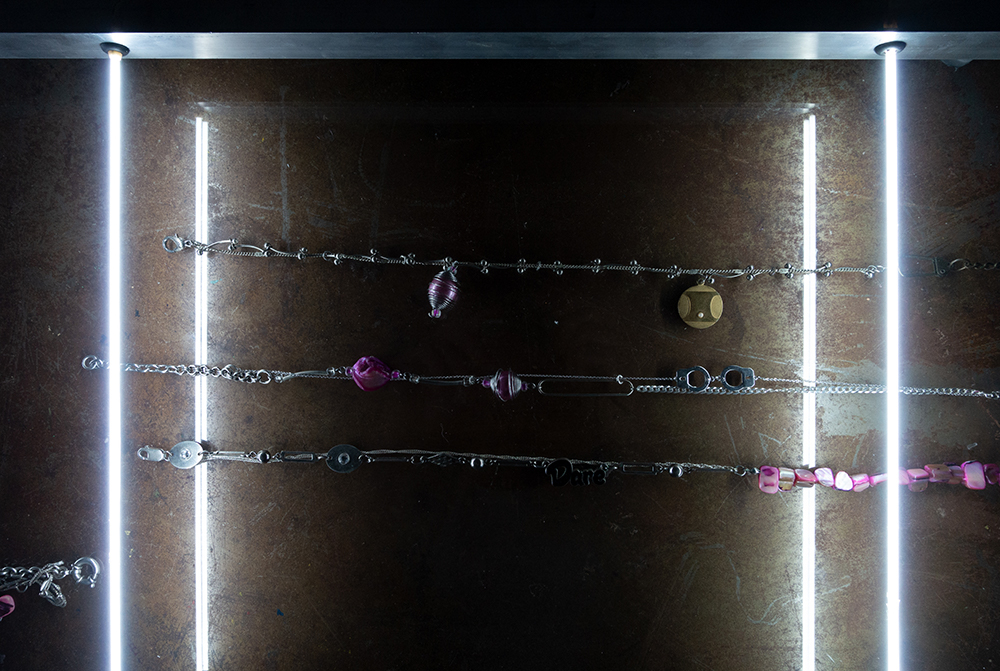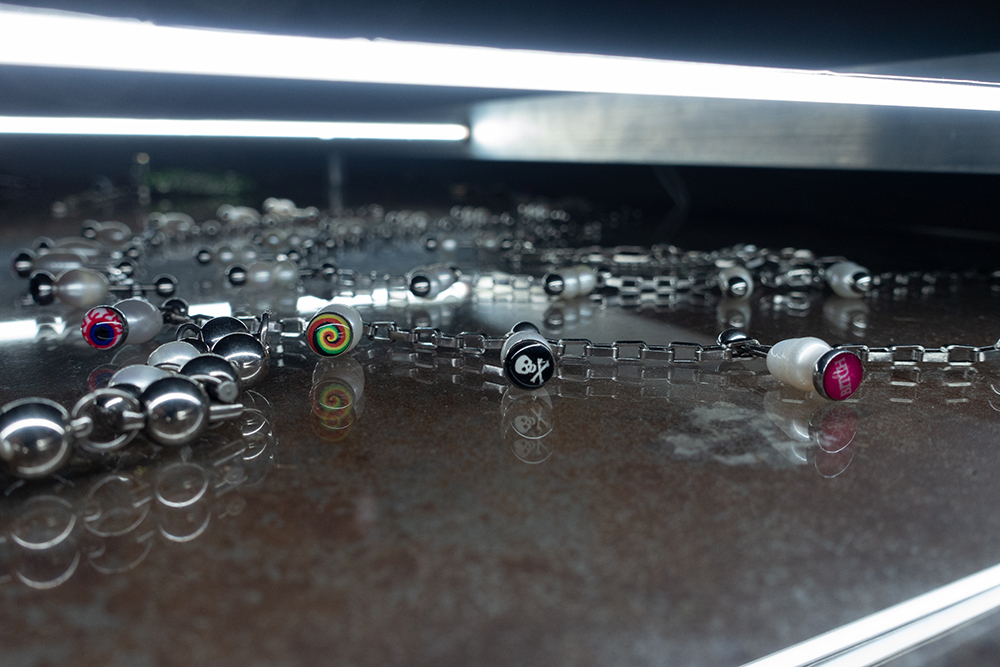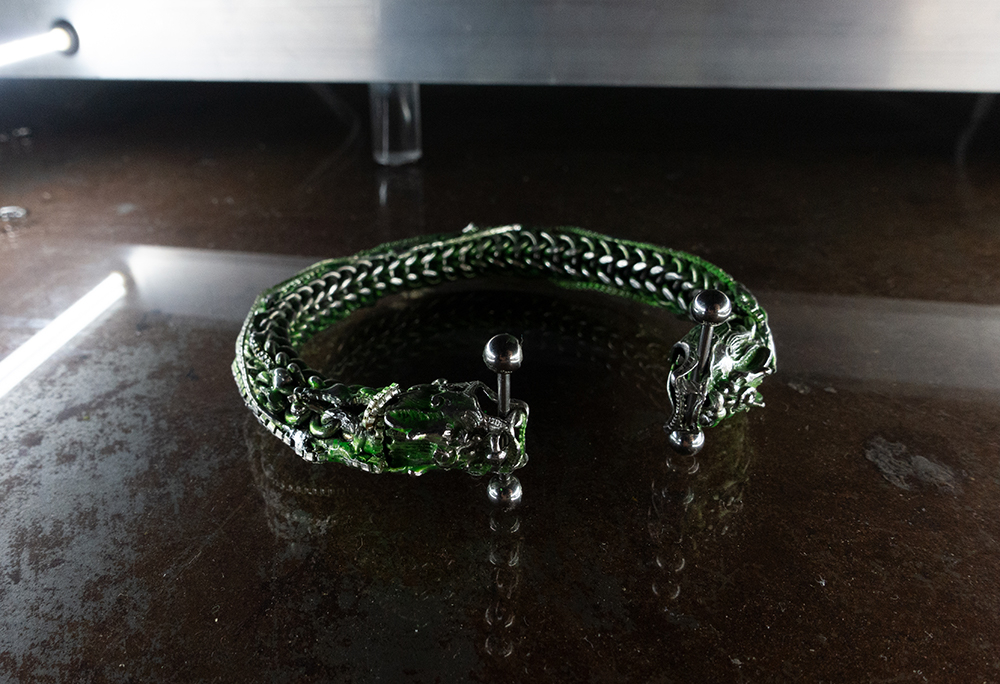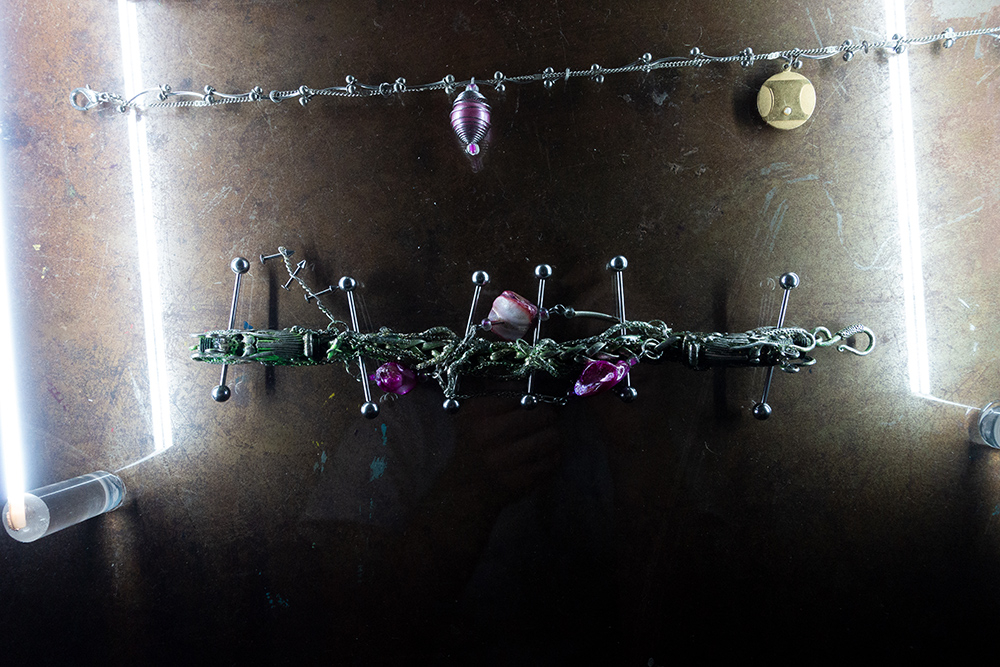Once inside artist Lucy Bull’s Los Angeles apartment, a low-lying wooden desk sits in the middle of the living-room space, drawing one’s central attention to its rectangular, back-lit glass surface. On top of the desk—also the site of Bull’s ongoing curatorial project From The Desk of Lucy Bull—is an elegant display of custom jewelry consisting of necklaces and bracelets by Los Angeles-based artist Mathis Altmann. The arrangement is the subject of the show Rembrandt Charms, running through October 20. One visitor asks a friend during the opening, “What do you think of this one?”, placing one of Altmann’s elaborate mixed-media sterling silver necklaces to her chest. This is the atmosphere during the opening, as streams of people attend throughout the night, sparking an interesting conversation about fashion, place, community and creative experimentation.
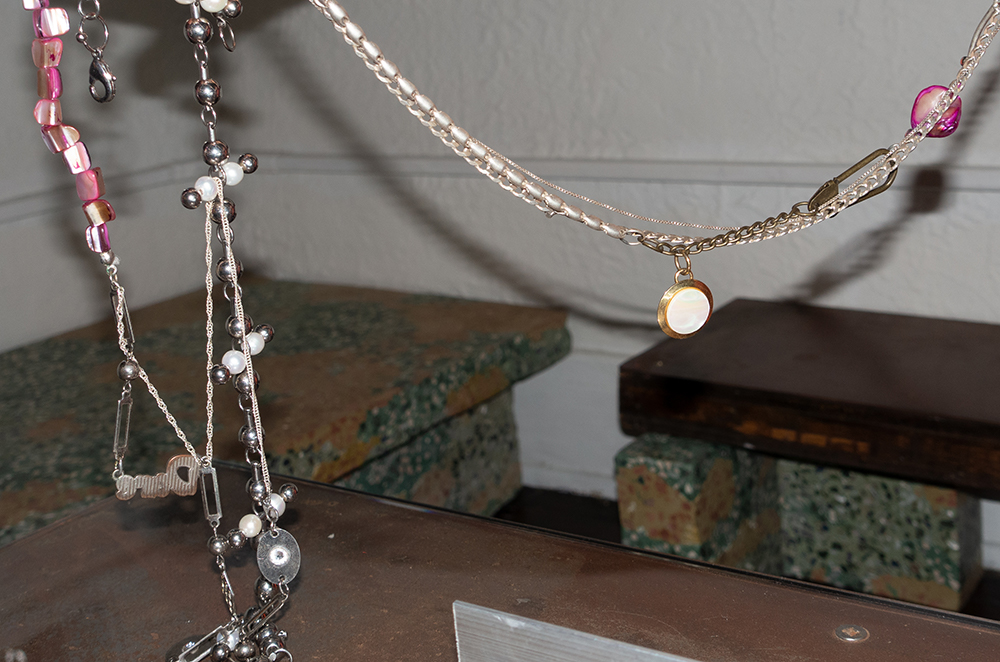
Altmann’s presentation isn’t his first venture into the world of wearables specifically. In correspondence, Altmann relays to me his creation of similar pieces as a way to think about and meditate on bigger questions. In fact, the visually striking body of work that comprise the majority of his practice directly informs his interest in jewelry. “I started to assemble chains and bracelets while waiting for components of my sculptures to dry,” he writes via email at a later date. “It was just stuff I wanted to wear, and helped to let my mind idle, as it requires a very calm hand and fingers. If you look closely, you spot overlapping techniques in my practice and the materials I use lately. In general, assemblage is the baseline.”
Vital to the success of Bull’s project, which she inaugurated last year, is the space she allows each of the artists she invites to experiment and create intimate conversations, not only with the desk but her living area. Rembrandt Charms builds off the collapsed landscapes of studio, exhibition and domestic space. In conversation outside her apartment, she informs me the shows are “an important exercise when constraints are presented in this format, obliging the artists who contribute to make work they would not do otherwise.” As much as art augments, it also takes away, which is an interesting dynamic when considering the limitations of creating objects for a table-top that introduces new ways of seeing and processing ideas for both audience and artist(s).
Having already shown prominent emerging artists like Ficus Interfaith, Gretta Johnson, Kayla Ephros, as well as Aleksander Hardashnokov, I caught up later with Bull and Altmann to talk further about the desk-top project and recent show.

**Why the interest in this project?
Mathis Altmann: I’m a big advocate of artist-run projects. It provides a platform disentangled from certain boundaries you sometimes can face in the gallery or institutional context. Ideas start to flow in an experimental way somehow quicker. Don’t get me wrong, this should always be the case—either it’s the gallery or the institution of course. But you know it’s just a smaller platform, easier to access.
I didn’t want to exploit the Desk as another platform for just presenting a result on behalf of my practice I’m known for. From the Desk… is a small project in Lucy’s apartment, living-room, studio, even bedroom. It’s very intimate and personal. There’re Lucy’s paintings around. Somehow everything you present there stands in relation, which occupies the spaces. Showing jewelry seemed appropriate. Pure pleasure. Also I’ve never shown anything related to this, so it was cool.
**You mentioned earlier about how there are specific overlaps between the work you make generally and what you created for Lucy’s project. Can you talk more on that?
MA: Yes there’s actually a lot. I like purchasing things at thrift stores in order to create my objects. A lot of stuff accumulated over the years. All sorts of materials. Miniatures, figurines, etcetera, and a lot of charms, chains which usually end up on my art. It was my intention to continue exploring this aspect of my practice for personal reasons.

**Is this your formal entry into wearables? Do you have bigger plans for this?
MA: I’ve never shown my jewelry before. I just wore it myself and people expressed their interest in them. Bigger always seems appropriate to the majority, but these pieces are all unique. They actually take a while to be executed. Art and fashion overlaps so heavily lately and it provokes a lot of desires. Fashion triggers with limited editions combined with good branding and marketing. A limited drop of some t-shirts, sneakers or whatever is cheap to produce and creates big profit margins. You know it’s limited but hopefully some influencer also owns the same piece.
Truly unique pieces appear more stubborn and don’t oscillate in this sort of realm, and branding isn’t required necessarily. Fashion is meant to appeal and be liked quickly; art actually should not, in order to maintain its resistance.
**Why did you decide to use the desk as an exhibition site?
Lucy Bull: I’ve always been wary of talking about my work and more interested in conversations surrounding it. The table becomes a place for people to congregate and take in work more organically. There’s less pressure to have an immediate reaction to the work. There’s more of an opportunity for a time-release. I’ve also worked in the service industry for some time, waiting tables, so I think the idea of the table-top as a focal point was a natural progression for me.

**I noticed how minimal your apartment is. How does this lend itself to your curatorial approach?
LB: I like to keep my space clear of clutter. It’s my painting studio, but I work off the wall, so the table was the space that was available for me to lend to others. There’s a great quote from Thierry Mugler that I came across in a magazine. He said something about how a good apartment only needs a few things: a bed, a table and a good light. And I couldn’t agree more! Mathis’ application of light to the desk is a new addition that lends itself to not only centering one’s attention to the jewelry on display but also dramatizing the setting as light shifts in the apartment from day to night.
**Light plays an important part not only in the documentation process for the show—making the pieces at once harrowing and beautiful. Are you always attuned to light as an expressive sensorial component?
LB: Light is a subject I think about more than anything. And probably the reason I moved to Los Angeles. Coming from New York City where you’re walking through the shadows of a building, it’s hard to not think of how Los Angeles feels stage-lit—it’s otherworldly, when I consider it. The shifts of light can be very visceral. This is a huge reason why I started the desk… In observing my own paintings over the course of a day, you start to have different entry points. The fact that this seems almost unachievable in a gallery setting is frustrating to me, so to create a situation where people can spend more time around work and actually experience this seems to me to what makes the project most effective.
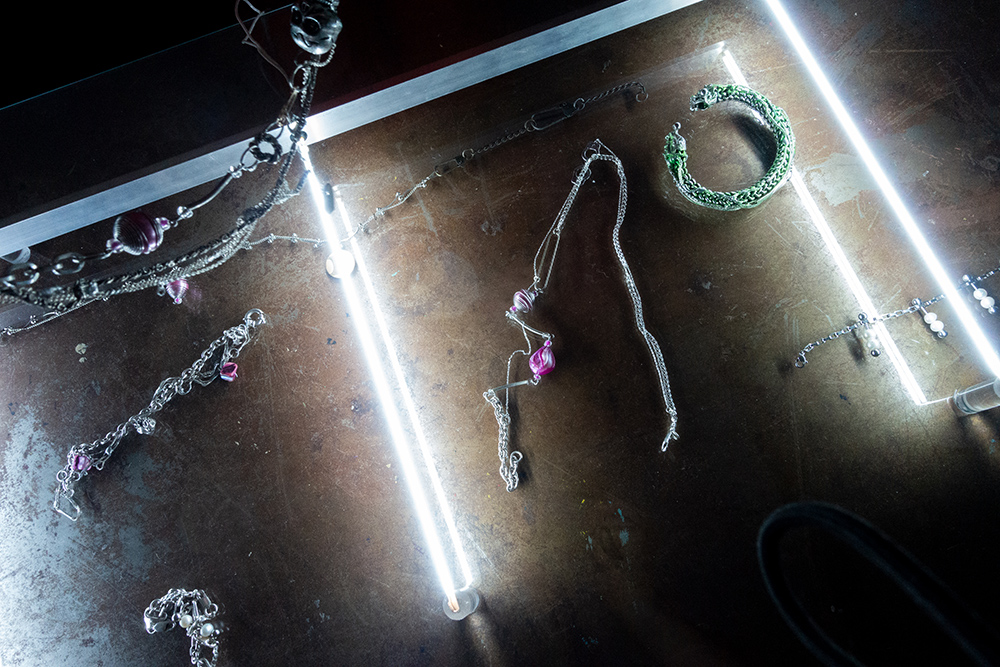
**This definitely translates in the documentation of the pieces.
LB: Totally! The setting of the table becomes this hyper-space. And because there’s no fixed orientation to viewing the work, it seems unfair for me to shoot the shows myself, which is why I like to invite others to do it. A new conversation around the work starts to shine through in its documentation.
It’s always interesting to see how each photographer attacks the job of documenting shows. With the ability to present so many views of a given show, you start to see how someone is looking—what they are honing in on and their process of putting it together as a whole. Mathis decided to shoot this show himself and I think it offers a very unique perspective. We are able to get a real sense for the intimacy involved in his process and his attention to detail (and drama) really comes to the fore. The images are wild!
**How has From The Desk of Lucy Bull impacted how you view or make your work?
LB: It’s had a huge impact! I mean it’s bizarre to invite all of these people into my home, which also happens to be my studio. It’s a very private domain, but I’ve gotten more comfortable with people seeing aspects of my own process that before I might have been more self-conscious about, just by letting people in on a regular basis. It’s given me the space to experiment and fail on my terms. And then each show allows me to become more acutely aware of the mechanics of space and how people navigate viewing work. I think this also translates to the artists who I have invited to the desk. It becomes a space that lends itself to experimentation. And in a time when professionalism forces young artists to orient themselves towards more market-based dynamics, the opportunity to fail and learn is incredibly refreshing.**
Mathis Altmann’s exhibition Rembrandt Charms was on at From The Desk of Lucy Bull, Los Angeles, running September 15 to October 20, 2019.
